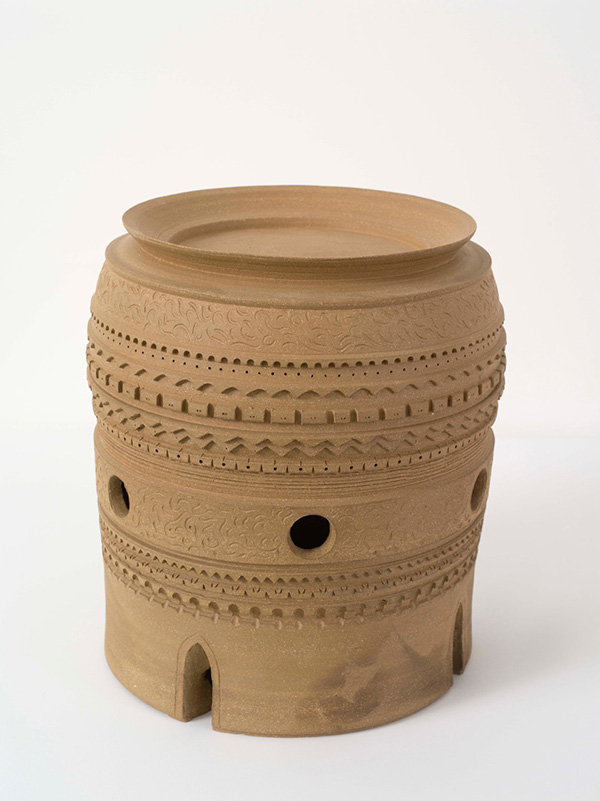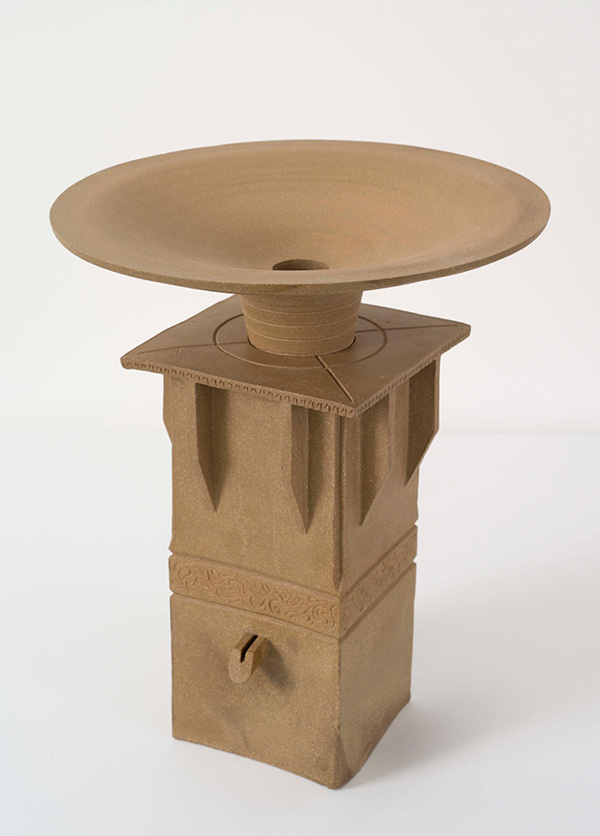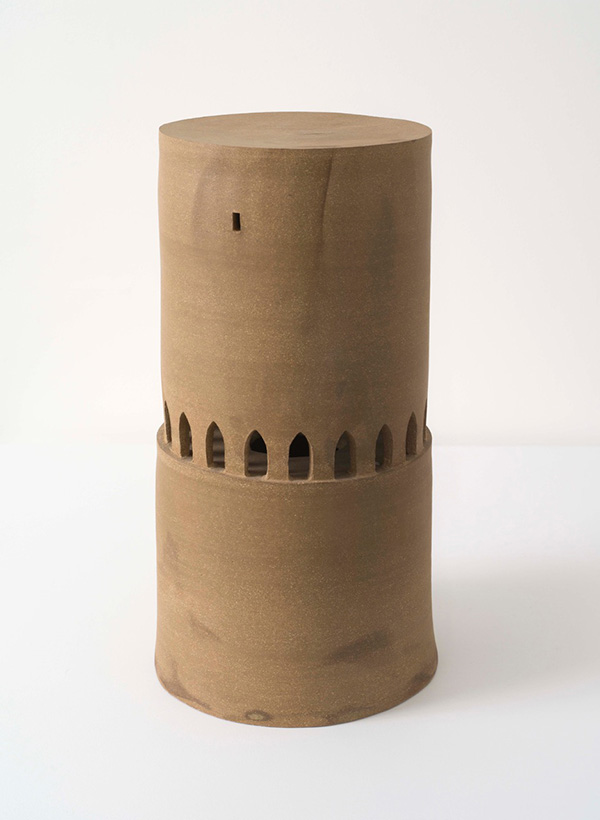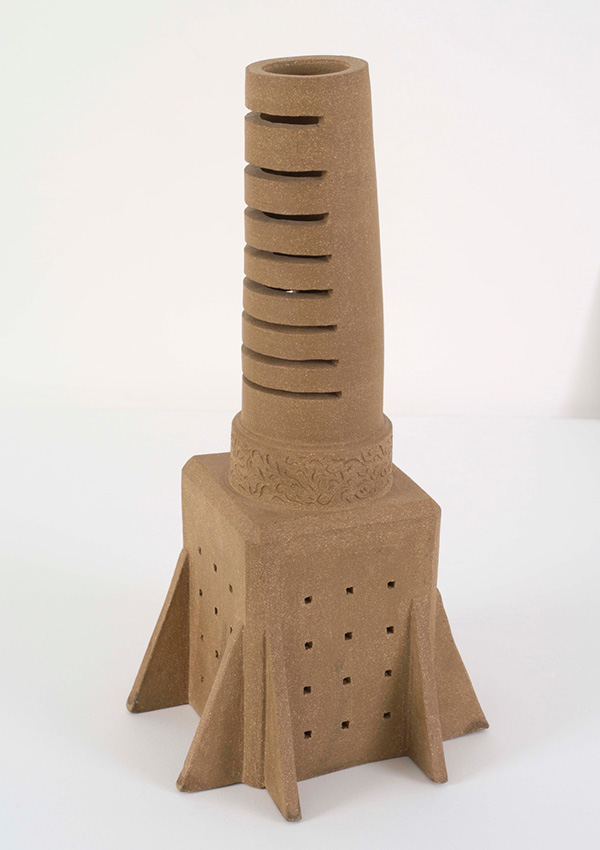NEW COMERS: Shahpour Pouyan
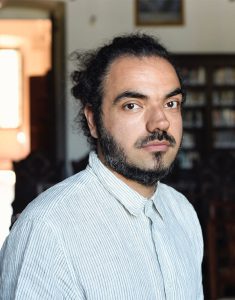 The Iranian artist Shahpour Pouyan belongs to the generation that came of age after the 1979 Islamic Revolution and the subsequent Iran-Iraq War (1980–89). Shahpour Pouyan’s practice reflects on the workings of political power, domination and possession through the language of cultural material and forms. He lives and works in New York, except his Art Studies at Tehran University of Art and at the Pratt Institute, he has studied Neoplatonic Philosophy and received a Diploma in Math and Physics from in Tehran. We discuss with Shahpour Pouyan on the occasion of his solo exhibition at the Galerie Nathalie Obadia in Paris, entitled “We owe this considerable land to the horizon line”.
The Iranian artist Shahpour Pouyan belongs to the generation that came of age after the 1979 Islamic Revolution and the subsequent Iran-Iraq War (1980–89). Shahpour Pouyan’s practice reflects on the workings of political power, domination and possession through the language of cultural material and forms. He lives and works in New York, except his Art Studies at Tehran University of Art and at the Pratt Institute, he has studied Neoplatonic Philosophy and received a Diploma in Math and Physics from in Tehran. We discuss with Shahpour Pouyan on the occasion of his solo exhibition at the Galerie Nathalie Obadia in Paris, entitled “We owe this considerable land to the horizon line”.
By Efi Michalarou
Photo: Galerie Nathalie Obadia Archive
Shahpour Pouyan, Photo: Giorgia Fanelli – Courtesy Civitella Ranieri Foundation 238, Courtesy of the artist and Galerie Nathalie Obadia, Paris/Brussels
Mr. Shahpour Pouyan, at an era that meanings like multiculturalism and globalization are redefined, through your work, you insist on your own cultural identity, do you believe that this attitude today is necessary more than ever?
I don’t think artists necessarily adjust their art practice to any artistic theory of the day. By living in the moment, my art will be contemporary enough. The artists’ concern should be internal; obviously, I don’t fixate on the “hottest” topics of the day. Do I ever think about globalization or multiculturalism in my work? No, never. Making art is a need for me, and every day I go to the studio to get my issues and worries out of my system. How could I be concerned about any ism? Do I insist in my cultural identity? No, I never do that. But, I care about the people of my country as much as I care about many others who suffer in different parts of the world. I make art as I cook food, the last thing that comes to my mind is how my food fits in with the latest theory or ism.
Concurrently with your Studies in Art you studied Philosophy, how important do you considered is the role of philosophy for the contemporary artist? Since this model refers to past times.
I don’t know if I have ever used my philosophic in my art, but I use more math. I make many calculations and geometric patterns in my work, especially for this new exhibition. I studied neoplatonism, which is about the time when philosophy and religion or, perhaps better stated, mysticism met each other. The beauty of neoplatonism is how philosophy was influenced by mysticism. The fruit of that synthesis was a poetic understanding of the world. I can’t say if it is a religion or philosophy, but something in between. It’s more like art, so if philosophy is confronting religion and especially mysticism, then here we have both. I think I am influenced by the hybrid of this philosophy and how two contradictory elements can meet each other to build a new system. If logic and belief can build philosophy then why not art? However, philosophy is vital for us. It’s more important than literature and math. It’s the first priority after food and clean water. I think the history of philosophy has to be studied in parallel to the general history of the world and of course history of religions.
You are creating contemporary artworks not only through the forms, but also through the materials, but you are drawing from the religion, history and tradition of your country. How intrigue is that?
My art is not about my country or my nationality. I have universal concerns, but I use a local visual accent or aesthetic. Do not forget these are all abstract concepts and it’s hard to say what is exactly local or where is the border between local and universal. However, I unintentionally celebrate some of my local historical art aesthetic. Do I think about them? No. As I said earlier, religion, history, and tradition are all related, and you can’t understand any of these subjects without knowing the parallel subjects. You can’t criticize a car if you don’t know about its’ design, engine and fabrication. You need to know all of them to draw a conclusion.
On your first solo exhibition in Paris entitled “We owe this considerable land to the horizon line”, you are presenting miniatures based on a selection of Persian miniatures depicting scenes from the ascension of Prophet Muhammad. Through manipulation, you transform them into abstract images or simple architectural scenes then you enhance them with gilding and paint. In this case what is the role of the rice paper with its lightness and transparency?
I had technical concerns with the paper. This particular Japanese rice paper has no chemical ingredients, and its quality is close to the original papers used in old miniatures. The lightness and transparency of the paper is important in mimicking the texture and wrinkles of the original and suggesting the fragility and mortality of the physical and metaphysical content of the art object.
Is it a demystification comment on the strictness of the religion through art or a re-reading with new contemporary terms and contemporary art language?
The best stories in the world are unwritten. They are perfect stories without any mistakes because they belong to the individual imagination. By removing the figures, I am freeing the landscape to the imagination. Could we use the same logic in portraying someone? I think so.
Many of your artworks are reminiscent of bombs and weapons of mass destruction, how influenced you the fact that your father was a military officer and what that means for you?
I grew up in a highly political and military family. I had access to all kinds of unfiltered information and data on the war and the traumatizing truth. I used to sneak into my father’s room and look at his books and magazines, which were mostly illustrated by images of aircrafts, blueprints and diagrams. These are part of my personal history and influenced my aesthetic language.
In the series of 28 ceramic domes-towers that are on presentation at the main space of the gallery, sculpture is conversing with architecture, since you draw elements from archetypical typologies of Islamic, Brutalist, Fascist architecture and 20th Century military structures. Observing these artworks, we realize that are dominated by two elements: the use of a single color that of sand, and the apparent lack of entry in the buildings. Which is the meaning of those elements in this series?
All these works are high fired clay without any glaze. I wanted to create an imaginary, dreamy landscape resembling a utopian sketch. Most of my memory of utopian landscapes or designs are monotone and grayish. This landscape is suggesting a future that has not yet been received. A promised land which has not been built, yet you know will fail. I didn’t add doors or entrances to many of the buildings when I felt that the door could change the nature of the sculpture and turn it into an architectural model. I only used doors if it was necessary. I used a door if I realized that a sculpture is missing its contents without the door. Of course, my utopia, like many other utopian landscapes, is not welcoming.
Info: Galerie Nathalie Obadia, 18 rue du Bourg-Tibourg, Paris, Duration: 9/3-6/5/17, Days & Hours: Mon-Sat 11:00-19:00, www.nathalieobadia.com
First Publication: www.dreamideamachine.com
© Interview-Efi Michalarou
